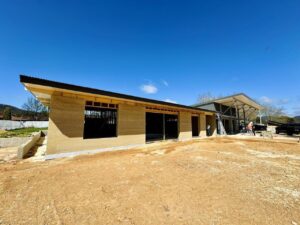
Researchers making hempcrete binders four times stronger
Dr Peter Irga
Australian researchers at the University of Technology, Sydney (UTS) are working with experienced hempcrete builders to develop a hemp-based structural panel with a geopolymer binder said to be up to four times stronger than traditional hempcrete.
Led by Professor Arnaud Castel from the UTS Faculty of Engineering and IT, a multi-disciplinary team of researchers have released their first publication on research creating a binder made of calcined clay and ground granulated blast-furnace slag.
“The first step is to improve the hempcrete itself by further reducing the embodied carbon, which is already very low compared to traditional concrete, and then to combine the two technologies,” said Professor Castel.
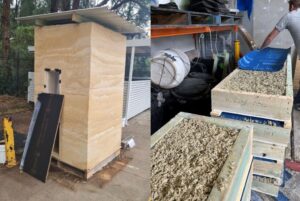
The research is in collaboration with regional industry leaders. From an industry standpoint, the project could open the door to significant growth in hemp-based building products, which are yet to take off in a big way in Australia.
Researchers are also working on the ‘Lithgow Women’s Shed’ project, a hempcrete structure that will be used for a community centre. The project is a multi-purpose building, housing both the Women’s Shed workshop and tool room, a public meeting hall for up to a hundred people with semi-commercial kitchen and accessible facilities, as well as two rentable offices intended for community or sporting organisations.
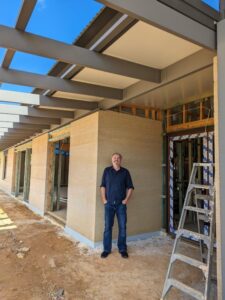
Hempcrete was chosen to replace the ice-box cottage the women had previously used as Lithgow can be very cold.
The Men’s Shed and Women’s Shed movements in Australia provide comfortable ‘third space’ communities which encourage skill-building, support, and social connection.
Why hempcrete?
Hempcrete is a bio-based material made from hemp, a fast-growing renewable plant source.
The research team has two objectives: to develop a novel low-carbon binder (the material that binds hempcrete together), and to create an integrated, prefabricated panel that enhances the performance of hempcrete technologies.
Concrete is the world’s most widely used construction material, but it’s highly carbon intensive. In Australia, the concrete sector is the second highest greenhouse gas emitter of all industries nationally, releasing five megatons of emissions into the atmosphere every year.
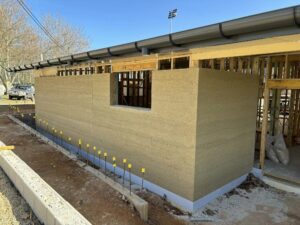
Developing sustainable alternatives is key to reducing the environmental impact of the built environment, and the new UTS-led ARC Linkage project is seeking to do just that.
Hempcrete offers significant potential to reduce the carbon impact of the built environment. Hemp-embedded building products are less carbon and energy intensive to produce than traditional alternatives, can capture and store carbon, and are highly resistant to biodegradation over time.
Previous research also suggests that hempcrete has excellent thermal insulation properties and enables greater control of interior environmental quality.
However, hempcrete binders have traditionally been made of hydraulic or hydrated lime, both carbon-intensive materials. Replacing this binder with a sustainable alternative will significantly increase hempcrete’s environmental credentials.
Potentially, researchers can develop a carbon-positive material, so the more of it that can be embedded in the building, the less carbon there is in the atmosphere.
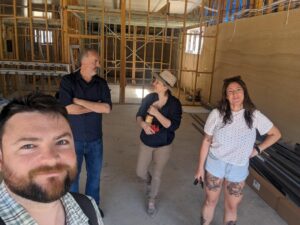
By developing prefabricated panels, the research team is hoping to leverage the inherent value of both products to create a solution that’s greater than the sum of its parts. And it comes at a critical time in Australia’s environmental history: as climate instability becomes more commonplace, decarbonising our urban environments will be a crucial component of protecting the future of our planet.
When we’re looking at cities and trying to reach net zero, the only way we can achieve this is by looking at all different aspects of buildings in a city and thinking about how we can implement all these sustainable technologies at once.
References:
Nair, S., et al. Suitability of calcined clay and ground granulated blast furnace slag geopolymer binder for hempcrete applications. Built Environment Project and Asset Management.2025. https://doi.org/10.1108/BEPAM-03-2024-0056
Duani, G., et al. A state-of-the-art review of hempcrete performance: a critical evaluation of the physical, structural and functional properties. Australian Industrial Hemp Conference. 2024. https://opus.lib.uts.edu.au/bitstream/10453/179178/2/A%20state-of-the-art%20review%20of%20hempcrete%20performance.pdf
